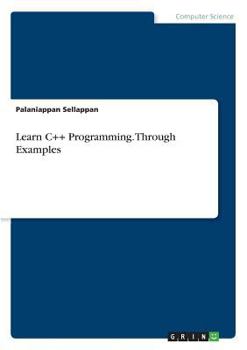Learn C++ Programming. Through Examples
Select Format
Select Condition 
More by Palaniappan Sellappan
Book Overview
Document from the year 2018 in the subject Computer Science - Programming, grade: 12, course: Diploma/Bachelor in IT, language: English, abstract: The C language was originally designed to support procedure-oriented programming. It was subsequently extended to C++ to support object-oriented programming (OOP). The symbol ++ in C++ indicates that it is an extension of C. C++ supports all features of C, as well added capability to support OOP. Thus you can C++ for both procedure-oriented and object-oriented paradigms. C++ is one of the most popular programming languages available today. With it, you can develop all sorts of applications such as scientific and business applications and games. It is also a popular language for mircroprogramming and interfacing with hand-held devices and electronic circuit boards and for developing IoT applications. This book is based on Microsoft Visual C++ 2017 but will equally apply to other versions of C++. This text is intended for beginners and intermediate users. It starts from the basics, but progresses rapidly to the more advanced features. So whether you are a beginner or an experienced C++ programmer, this book will help you master the essentials of C++ programming very quickly. The text is written in an easy-to-read style and contains numerous examples to illustrate the programming concepts. It also contains exercises for practice at the end of each chapter.
Format:Paperback
Language:English
ISBN:3668807140
ISBN13:9783668807143
Release Date:November 2018
Publisher:Grin Verlag
Length:200 Pages
Weight:0.59 lbs.
Dimensions:0.5" x 5.8" x 8.3"
Customer Reviews
5 customer ratings | 5 reviews
There are currently no reviews. Be the first to review this work.























